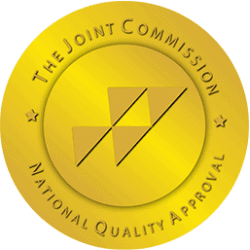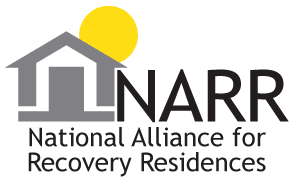What is Neuroleptic Malignant Syndrome?

NMS was first described in the 1960s following the introduction of antipsychotic medications, particularly the first-generation agents such as haloperidol and chlorpromazine. Its exact prevalence is difficult to ascertain, largely due to underreporting and variability in clinical practice; however, estimates suggest an incidence rate of 0.5% to 1% among patients treated with antipsychotics. The syndrome can occur after the initiation of a new neuroleptic medication, an increase in dosage, or within the first few weeks of treatment. Notably, it may also manifest in patients who are receiving therapeutic doses of antipsychotic agents to which they have previously been tolerant.
The pathophysiology of NMS is not fully understood, but it is believed to involve dopamine receptor blockade in the central nervous system, particularly at the level of the basal ganglia and hypothalamus. The abrupt cessation of dopamine transmission may precipitate the rigid stupor and hypertonia observed in patients. Additionally, dysregulation of the autonomic nervous system can lead to fluctuations in heart rate, blood pressure, and body temperature. This cascade of neurological and physiological changes culminates in a state that can resemble hyperthermic crises found in other medical emergencies.
Clinically, NMS manifests through a classic tetrad of symptoms: severe muscle rigidity, elevated body temperature (hyperthermia), autonomic instability, and altered mental status. Muscle rigidity is often described as “lead-pipe” rigidity, where the muscle tone is consistently stiff and resistant to passive movement. Hyperthermia can range from a mild increase to temperatures exceeding 40 degrees Celsius (104 degrees Fahrenheit). Autonomic instability may present as tachycardia, labile blood pressure, diaphoresis, and dysphagia. Patients may also exhibit alterations in consciousness, ranging from confusion and agitation to profound stupor or coma.
Diagnosis of NMS is primarily clinical and relies heavily on the recognition of characteristic symptoms following the use of neuroleptic medications. There are no specific laboratory tests to confirm the diagnosis; however, certain laboratory abnormalities may support the clinical picture. These often include elevated creatine phosphokinase (CPK) levels due to muscle breakdown, leukocytosis, and metabolic acidosis. The differentiation of NMS from other conditions that can present similarly, such as serotonin syndrome, malignant hyperthermia, or infections, is essential to initiate appropriate management.
Management of NMS necessitates immediate discontinuation of the offending neuroleptic medication and prompt supportive care. This may include hydration to address potential renal complications due to rhabdomyolysis, temperature regulation using antipyretics or cooling measures, and close monitoring of vital signs. In severe cases, pharmacological intervention with dopaminergic agents, such as bromocriptine or amantadine, may be employed to counteract the dopaminergic blockade. Severe cases with significant autonomic instability may necessitate the use of muscle relaxants, such as dantrolene, though this remains a controversial and less commonly employed approach.
The prognosis of NMS, while variable, is generally favorable with appropriate and timely intervention. Most patients experience full recovery within one to two weeks, although some may exhibit prolonged symptoms or residual effects. The risk of recurrent NMS remains a significant concern; therefore, careful consideration is warranted when reinitiating neuroleptic therapy. In patients with a history of NMS, clinicians may consider utilizing atypical antipsychotics, which have a different receptor profile and a lower incidence of NMS, albeit still requiring caution.
What is Neuroleptic Treatment?

Neuroleptics can be classified into two principal categories: first-generation (typical) antipsychotics and second-generation (atypical) antipsychotics. First-generation antipsychotics, which include medications such as haloperidol and chlorpromazine, were the earliest form of neuroleptic treatment. These agents primarily exert their effects by blocking dopamine D2 receptors in the brain, which helps alleviate positive symptoms of psychosis—such as hallucinations and delusions. However, their use is often associated with a plethora of side effects, including akathisia, Parkinsonism, and tardive dyskinesia. These extrapyramidal symptoms arise from the disruption of dopaminergic pathways that regulate motor control.
In contrast, second-generation antipsychotics, including medications such as clozapine, risperidone, and olanzapine, emerged in the 1990s as a response to the limitations of their predecessors. These atypical agents not only antagonize dopamine receptors but also modulate serotonin receptors, yielding a broader spectrum of therapeutic effects and a generally more favorable side effect profile. As such, atypical antipsychotics are often preferred in clinical practice due to their efficacy in targeting both positive and negative symptoms of schizophrenia and their lower propensity to induce movement disorders.
Despite the advancements in neuroleptic treatment, the therapeutic journey is fraught with complexities. Clinicians must engage in a thorough evaluation of each patient’s unique presentation, medical history, and treatment preferences to tailor an effective neuroleptic regimen. Dosage, for example, can substantially impact both efficacy and tolerability; hence, a judicious balance must be struck to minimize adverse reactions while maximizing therapeutic outcomes. Regular monitoring is essential, as patients may experience fluctuations in their symptomatology necessitating adjustments in the treatment plan.
The impact of neuroleptic treatment extends beyond symptom management; it encompasses a holistic approach to mental well-being. The appropriate use of these medications can facilitate an improvement in social functioning, enhancing the individual’s capacity for personal relationships and occupational engagement. Consequently, neuroleptic treatment is often integrated with psychosocial interventions, including psychotherapy, support groups, and rehabilitation services, creating a multidimensional approach to mental health care. These adjunctive therapies can mitigate feelings of isolation and empower patients to actively participate in their recovery processes.
Nonetheless, the landscape of neuroleptic treatment is not without ethical considerations and challenges. The phenomenon of polypharmacy—often employed to manage residual symptoms or side effects—may illuminate the risks of drug interactions and compounded side effects. Additionally, the stigmatization surrounding mental illness can lead to reluctance in seeking treatment or adherence to prescribed regimens. Advocating for patient education and informed consent is therefore imperative to foster trust and ensure collaborative decision-making between practitioners and patients.
Moreover, the potential for long-term adverse effects, including metabolic syndrome and cardiovascular complications associated with certain atypical neuroleptics, has raised valid concerns within the psychiatric community. This underscores the necessity for clinicians to remain vigilant in monitoring patients’ physical health in conjunction with their mental health status. Ongoing research into the mechanisms of action, efficacy, and safety profiles of neuroleptics is crucial in informing best practices and optimizing treatment outcomes.
Neuroleptic treatment stands as a cornerstone in the management of severe mental disorders, providing essential relief for many individuals contending with the burdens of psychosis. The evolution from first-generation to second-generation antipsychotics has facilitated advancements in efficacy and tolerability, yet the journey remains intricate and multi-faceted. A carefully considered approach that prioritizes patient-centered care, ethical considerations, and ongoing research will continue to shape and enhance the landscape of neuroleptic treatment, ensuring that it remains effective and compassionate in its pursuit of mental health recovery.
Treatment for Neuroleptic Malignant Syndrome
Understanding the treatment modalities for NMS is paramount for clinicians, given the high morbidity and mortality associated with this condition. The following delves into treatment approaches for NMS, incorporating both immediate interventions and long-term management strategies.
The cornerstone of NMS treatment is the prompt recognition and discontinuation of the offending neuroleptic agent. Clinicians must diligently assess the patient’s medication history and initiate alternative therapeutic strategies. Immediate cessation of the antipsychotic is critical because continued exposure to the drug can exacerbate symptoms and significantly increase mortality risk. This initial step effectively removes the precipitating factor, which is essential for ameliorating the syndrome.
Following the discontinuation of the neuroleptic, supportive care constitutes the next pivotal intervention. Patients with NMS may present in an emergency setting, often requiring hospitalization for comprehensive monitoring and care. Supportive measures primarily involve patient stabilization, which can include intravenous hydration to manage fluid imbalances and restore electrolyte homeostasis. Significant muscle rigidity can lead to rhabdomyolysis, a condition where skeletal muscle tissue breaks down, potentially causing kidney injury. Therefore, aggressive hydration is necessary to prevent this complication and facilitate the excretion of myoglobin released from damaged muscle tissue.
Temperature control is another critical component of supportive care in managing NMS. Patients can exhibit hyperthermia due to the hypermetabolic state induced by the syndrome. Application of cooling measures, such as fan therapy, ice packs, or cooling blankets, could help reduce body temperature effectively. This intervention not only ameliorates discomfort but also decreases the risk of hyperthermia-associated complications, such as multi-organ dysfunction.
Pharmacological treatments can also play a significant role in managing NMS. While no specific antidote for NMS exists, several medications have demonstrated efficacy in alleviating symptoms. The use of dantrolene, a muscle relaxant, has shown promise in treating severe muscle rigidity and hyperthermia associated with NMS. Dantrolene acts by impairing calcium release from the sarcoplasmic reticulum, thereby reducing muscle contraction and promoting relaxation. Various studies have suggested that dantrolene can expedite recovery and reduce mortality when administered early in the course of the syndrome.
Another pharmacological option is the administration of bromocriptine, a dopamine agonist which is thought to counteract dopamine blockade caused by antipsychotics. Bromocriptine can ameliorate symptoms associated with NMS by restoring dopaminergic activity in the central nervous system. Although both dantrolene and bromocriptine have been used in clinical practice, the selection between them often depends on the individual patient’s presentation and potential contraindications.
In cases where patients demonstrate refractory symptoms or deteriorate despite initial interventions, electroconvulsive therapy (ECT) has been utilized as a last-resort treatment. ECT is effective in rapidly alleviating severe psychiatric symptoms, including those seen in NMS, and has the added benefit of being safe for patients who are unable to ingest medications. ECT can expedite recovery, particularly in cases where neurological deterioration or prolonged hospitalization occurs.
Preventive measures to minimize the risk of NMS are also crucial, especially in patients requiring long-term antipsychotic treatment. Clinicians should carefully assess the indication for antipsychotic therapy, considering individual patient risk factors, such as history of NMS, coexisting medical conditions, and the presence of concomitant medications that may increase the risk of NMS. When initiating treatment, starting with low doses and titrating gradually may also help mitigate risk.
How Pharmacogenomics Can Play a Role in Preventing Neuroleptic Malignant Syndrome
The pathophysiology of NMS is not entirely understood, but it is believed to result from excessive dopamine receptor blockade in the central nervous system, precipitated by the administration of antipsychotic medications. The risk factors for NMS include high-potency first-generation antipsychotics, rapid dosage escalation, dehydration, and the presence of mood disorders. However, some patients develop NMS even at standard doses and after years of treatment, suggesting an inherent susceptibility that could be influenced by genetic factors. Genetic variability can impact drug metabolism through polymorphisms in cytochrome P450 enzymes, which are crucial for the biotransformation of many psychotropic medications.
Pharmacogenomic studies have identified several genes associated with the metabolism of antipsychotics, including CYP2D6, CYP2C19, and CYP3A4. Variability in these genes can lead to differences in drug clearance rates and, consequently, differences in plasma concentrations of the medication. For instance, patients who are classified as poor metabolizers may experience higher drug levels, increasing the likelihood of adverse reactions such as NMS. In contrast, ultra-rapid metabolizers might receive subtherapeutic doses, leading to inadequate treatment response. Therefore, pharmacogenomic testing prior to the commencement of antipsychotic therapy can inform clinicians about individual metabolic profiles and assist in selecting appropriate medications and dosages, ultimately reducing the risk of NMS.
Furthermore, the interplay between genetics and responsiveness to antipsychotics extends beyond metabolism. Certain genetic markers have been associated with variable therapeutic responses, which can also correlate with the development of side effects like NMS. For instance, variations in the dopamine D2 receptor gene (DRD2) have been shown to influence how patients respond to dopaminergic antipsychotics. Patients with specific alleles may be predisposed to adverse effects, emphasizing the importance of pharmacogenomics in predicting which individuals might be at a heightened risk for complications such as NMS. By identifying these genetic predispositions, healthcare providers can modify treatment regimens proactively, substituting medications with lower risk profiles.
Moreover, an expanding body of research has indicated that patients diagnosed with certain psychiatric conditions, such as schizophrenia or acute psychosis, may also exhibit genetic susceptibilities that contribute to NMS risk. Genetic variants linked to stress response, inflammation, and neurodevelopment indicate a multifactorial framework governing the potential for NMS. For instance, polymorphisms in genes related to the serotonin transporter (5-HTTLPR) and the catechol-O-methyltransferase (COMT) gene may confer susceptibility to neuroleptic complications. Understanding these associations through pharmacogenomic methodologies not only aids in enhancing general knowledge about NMS but also facilitates targeted therapeutic interventions.
Despite the promise of pharmacogenomics in mitigating the risk of NMS, significant barriers remain to its clinical application. Access to pharmacogenomic testing can be limited, and the interpretation of genetic tests is often complex, requiring collaboration across disciplines—psychiatrists, geneticists, and pharmacists—to ensure a comprehensive understanding of results. Furthermore, widespread integration into clinical practice necessitates education and training, allowing healthcare providers to make informed decisions based on genetic information.
To summarize, pharmacogenomics plays a crucial role in the prevention of Neuroleptic Malignant Syndrome through its ability to tailor antipsychotic medication choices and dosing to the individual’s genetic profile. By utilizing pharmacogenomic data to anticipate drug reactions and optimize therapeutic strategies, clinicians can significantly reduce the risk of NMS, enhancing patient safety and treatment outcomes. As research continues to elucidate the genetic factors contributing to drug response and side effects, the integration of pharmacogenomics into psychiatric care will become an increasingly vital component of comprehensive mental health treatment. The outcome will not only foster safer therapeutic environments but will also advance the paradigm of personalized medicine in psychiatry, ultimately leading to enhanced patient quality of life.
In Conclusion
In conclusion, Neuroleptic Malignant Syndrome represents a critical clinical entity that professionals must recognize and manage promptly. The integration of clinical vigilance, awareness of risk factors, and appropriate therapeutic strategies is essential to mitigate the risks associated with neuroleptic treatment. By fostering understanding and knowledge regarding NMS, we can ensure safer therapeutic practices for those requiring psychotropic intervention.
Ambrosia stands at the cutting edge of mental health and addiction treatment. Since 2007 Ambrosia has been the nation’s leader in adult and adolescent behavioral healthcare maintaining a strong focus on neuroscience and research fueling their advanced treatment methods. If you or someone you know is struggling reach out today and we will provide you with exemplary customer service and a truly effective treatment experience.
Additional Resources for Families Regarding Mental Health and Substance Abuse:
SAMHSA: Substance Abuse and Mental Health Services Administration
NAMI: National Alliance on Mental Illness
Our admissions team is standing by 24/7 to help you in times of crisis and to answer any of your questions.







